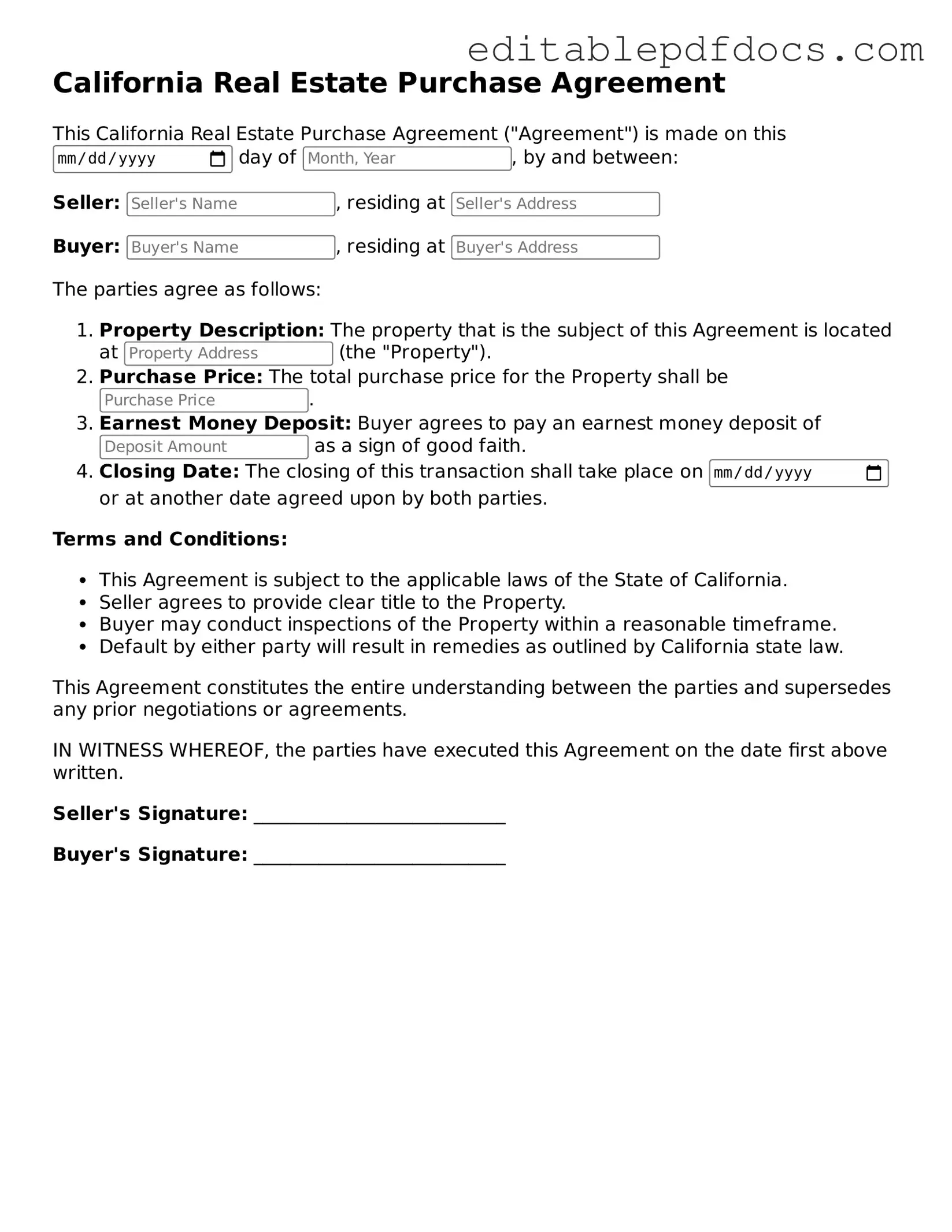Filling out the California Real Estate Purchase Agreement can be a daunting task. Many people make common mistakes that can lead to complications down the line. One frequent error is not providing accurate information about the property. Ensure that the address, parcel number, and any relevant details are correct. Inaccuracies can cause confusion and delay the transaction.
Another mistake is overlooking the contingencies section. Buyers often forget to include important contingencies, such as financing or inspection contingencies. These clauses protect buyers by allowing them to back out of the deal if certain conditions aren't met. Omitting them can leave buyers vulnerable.
Additionally, some individuals fail to specify the closing date. This date is crucial as it sets the timeline for the transaction. Without a clear closing date, both parties may have different expectations, leading to frustration and potential disputes.
Buyers sometimes neglect to read the entire agreement thoroughly. Skimming through can result in missing key clauses or terms that could impact the purchase. Taking the time to understand every section is essential to avoid surprises later.
Another common oversight is not including the earnest money deposit amount. This deposit shows the seller that the buyer is serious about the offer. If this amount is missing, it may weaken the offer and raise questions about the buyer's commitment.
Some people also forget to include the seller's disclosures. Sellers are required to disclose certain information about the property, such as any known defects. Failing to include this can lead to legal issues if problems arise after the sale.
Misunderstanding the financing terms is another frequent mistake. Buyers should clearly outline how they plan to finance the purchase. Vague terms can lead to confusion and may jeopardize the deal if financing falls through.
Lastly, individuals often forget to sign and date the agreement. A missing signature can render the document invalid, causing delays in the transaction process. Ensure that all parties sign and date the agreement to avoid any issues.
